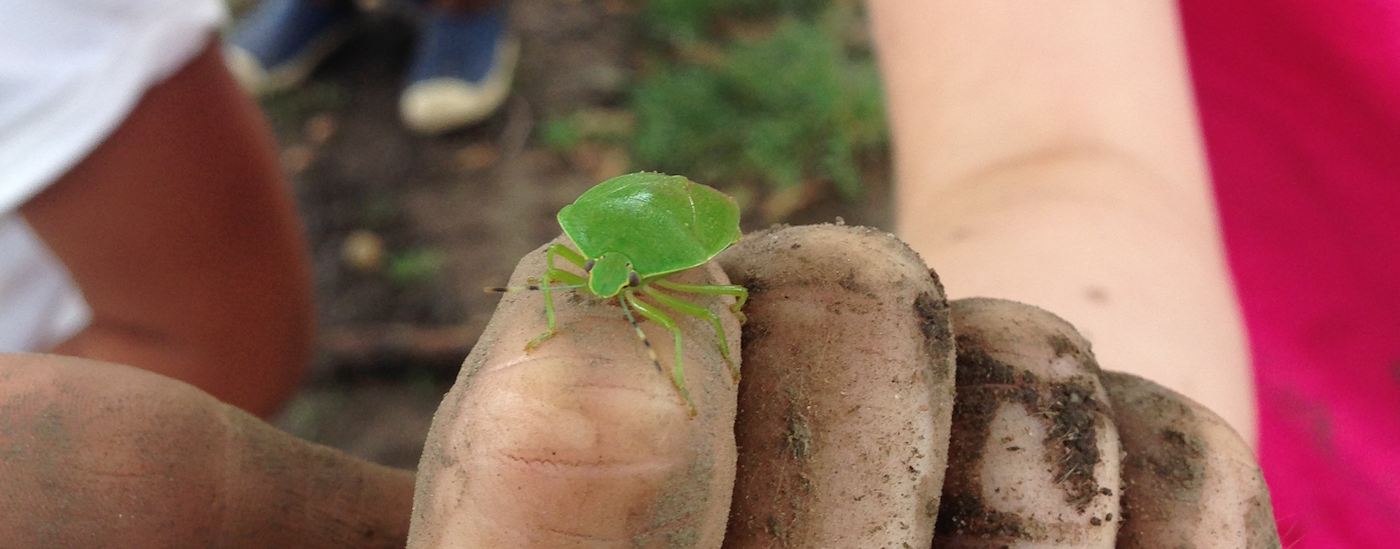Glimpse a Robin's World
-
Age: 3 to 8+
-
Time: 1 hour+
-
Materials: string, mirror
- Skills: Creativity, Curiosity, Naturalist, Problem Solving, Empathy, Focus & Self Control
Robin's Nest Activity for Kids
Children—well, all people really—are naturally drawn to animals. Naturalist John Muir said it beautifully:
"Any glimpse into the life of an animal quickens our own and makes it so much the larger and better in every way."
If you guide your kids to do nothing more than notice, watch, or casually study animals in your area, they will likely be fascinated, and you will have an opening to inspire in them a lifelong curiosity. Then, go one step further by introducing a genuine problem to solve within the captivating context of observing animals. When you combine such an engaging situation with genuine, self-directed, hands-on problem-solving, you get all parts of kids’ brains firing, and you create the potential for lasting, deep learning.
What’s one way to do this? Hunt for and find a bird’s nest—targeting a bird whose nests are easy to find and reach like the robin. Talk with kids about the nest, what they notice and what they think might be inside. Then, challenge them to use a few simple materials (mirror, string, scissors) and anything around them to make a tool to spy inside the nest without disturbing the nest or its tenants in any way.
Watch as they imagine, design, build, test and adjust their tool. Support them as they execute their vision. Then, stand with them and watch their faces light up as you use their tool to peek into the life of a bird. Cheer with them as you see bright blue eggs or, if you are lucky, baby birds. If you can, come back to watch the nest and keep track of the birds...and be prepared to build further versions of the tool to reach other nests, high and low.
The Guide
- Find a nest: You do not have to be an animal expert to find a robin’s nest. Find the edge of a wooded area, preferably where you see robins in nearby open spaces. Then, look closely for nests in the lower halves of trees, built on one or more horizontal branches (aka in a “nook” in the tree). Use a mirror or hold up a camera to peek in the nest yourself first, if you want to make sure that there is, indeed, something in the nest.
- Chat before you start developing a tool: Ask, Why do birds build nests? How do you think the robin made this nest? What do you think is in the nest? How do you think we should move/act if we got close to the nest?
- Set up the challenge: How could we build a tool that will help us see inside the nest without touching or bothering the birds or the nest? Show kids the materials with which they have to work (We used a lightly curved plastic mirror, string and scissors). Then, kids can add anything they could find outside (sticks, branches, other trees, rocks, etc.).
- Support kids as they imagine, design and build: Depending on their ages, kids will need more or less support from you. The key is to let them drive as much of the process as they can. For example, let them generate, mull over and try different ideas, even ones that you know will not work. You can help move the process along by summarizing the ideas for kids and helping them to pick one to start with. Help gather materials that are too heavy or challenging for them to gather. Or, cut string and tie knots as needed, but make sure you are cutting and tying where the kids wants the string to be cut or tied. If a design fails, remind them that that is part of the process and is good, as long as they learn how to improve the design. We’ve seen kids imagine a range of solutions including: giant stilts made out of sticks; pulley systems to raise the mirror up and down; using mirrors together as in a periscope; and tying a mirror to a long branch (the winning design).
- What if you have little ones in tow? If you have kids under 4 along, they will not be able to envision or build a tool. However, they can learn by listening to you as you model the process of tinkering and building the tool. Then, they will certainly enjoy and benefit from using the tool to see into the nest.
Why is this activity great for kids?
As soon as you start this activity, you’ll realize this is an incredibly valuable use of your time together. But more specifically, if a situation evokes a joyful emotional response, the brain will be even better able to operate, remember and learn. Few experiences are more joyful than peeking into a robin’s nest to see bright blue eggs and even fledglings (baby birds)—wonders to behold.
By choosing such an engaging context and letting kids work out their own solution, you give kids the ideal practice at directing and maintaining their focus and self control.
When we say creative, we mean able to both imagine original ideas or solutions and do what needs to be done to make them happen. By challenging kids to purpose-build a tool and then enabling them to use it to solve a problem, you give them the chance to practice both the imagining and the doing and, as a result, to develop true creativity.
Finally, getting close to animals connects children to nature and builds care and compassion for all living things.





